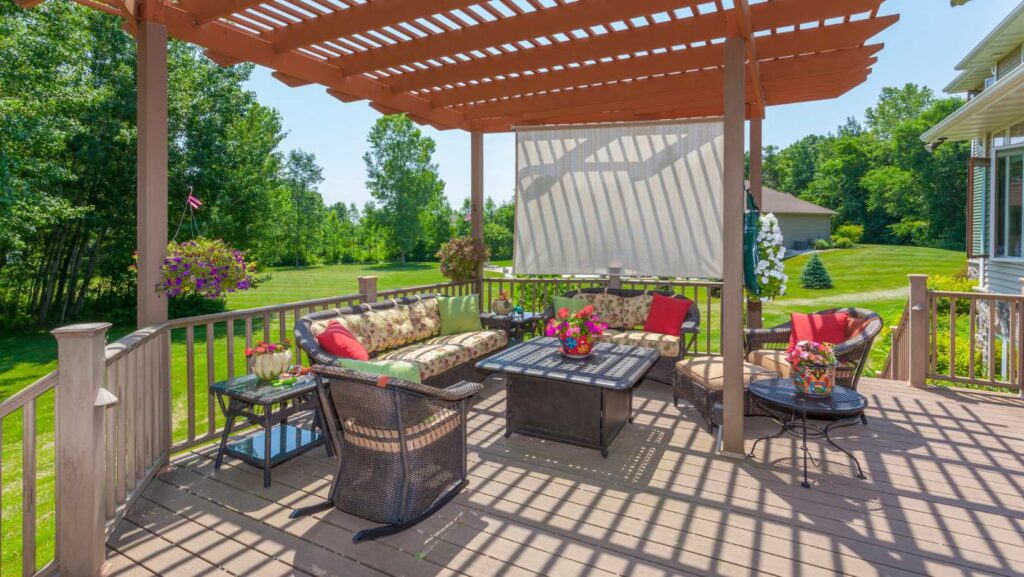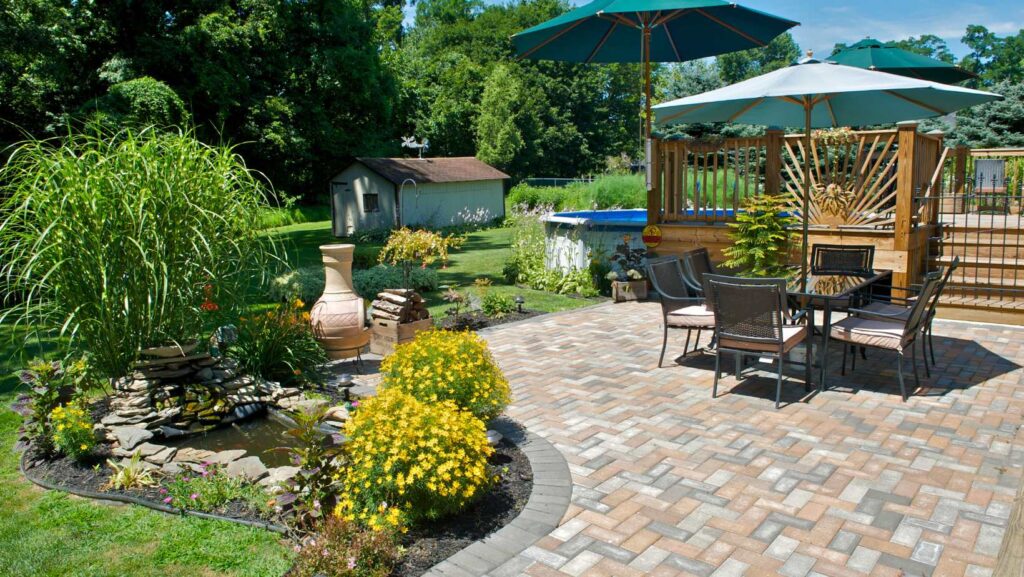Deck vs. Patio: Which Outdoor Space is Right for You?
Creating an outdoor living space can significantly enhance your home’s value, aesthetics, and functionality. Whether you’re looking to entertain guests, relax with family, or simply enjoy nature, adding a deck or patio can transform your backyard into a personal oasis.
However, choosing between a deck and a patio can be a challenging decision. Each option presents unique benefits and potential challenges, influenced by factors like budget, terrain, maintenance, and personal preferences.
This article will guide you through the considerations to help determine which outdoor space is right for you.
Let’s Understand Decks and Patios
Decks
Decks are raised structures typically made of wood or composite materials. They are often attached to the house and can be multi-leveled, offering a versatile and customizable outdoor living area. Common materials for decks include pressure-treated wood, cedar, redwood, and composite materials made from recycled plastics and wood fibers.
Advantages of Decks:
- Elevation and View: Decks can be built off the ground, making them ideal for homes on uneven terrain or sloped yards. This elevation can provide a better view of the surroundings and create a sense of separation from the ground, offering a unique outdoor experience.
- Aesthetic Appeal: Wood decks, in particular, add a warm, natural look to your home. Composite decks offer a wide range of colors and finishes, ensuring that the deck complements your home’s exterior.
- Cooler Surface: Deck materials, especially wood, tend to stay cooler in direct sunlight compared to concrete patios, making them more comfortable to walk on barefoot during hot weather.
- Versatility: Decks can be designed in various shapes and sizes, incorporating multiple levels, built-in seating, planters, and even pergolas or gazebos.
Disadvantages of Decks:
- Cost: Decks generally cost more to build than patios due to the materials and construction involved. Elevated decks require support structures, which can increase the overall expense.
- Maintenance: Wood decks demand regular upkeep, including sealing, staining, and occasional repairs to prevent issues like rot, splintering, and insect damage. Composite decks are lower maintenance but still require cleaning to prevent mold and mildew buildup.
- Durability: Wood decks, while beautiful, can suffer from weather damage over time. Composite decks are more durable but can be prone to fading and staining.

Patios
Patios are ground-level outdoor spaces typically made from concrete, pavers, stone, or brick. They are usually built directly on the ground, making them more integrated with the landscape.
Advantages of Patios:
- Cost-Effective: Patios are generally less expensive to build than decks. The cost of materials like concrete or pavers is often lower, and the installation process is simpler.
- Low Maintenance: Patios require minimal maintenance. Concrete can be sealed to prevent stains, and pavers or stones can be easily cleaned with a hose or pressure washer. They are also less prone to weather damage compared to wood decks.
- Durability: Patios made from stone, brick, or concrete are extremely durable and can last for decades with minimal upkeep. They are resistant to weather changes and heavy use.
- Versatility in Design: Patios can be designed in a wide variety of shapes, patterns, and colors. They can seamlessly integrate with landscaping features like gardens, water fountains, and outdoor kitchens.
Disadvantages of Patios:
- Terrain Limitations: Patios require a flat surface, which can limit their use on sloped or uneven yards. Significant landscaping work may be needed to create a level area, adding to the cost and complexity.
- Temperature: Concrete and stone can become very hot under direct sunlight, making them uncomfortable to walk on during summer. Additionally, they can become slippery when wet, posing a safety risk.
- Limited Elevation: Patios are ground-level structures, so they don’t provide the same elevated view or separation from the yard as decks. This can be a drawback for those seeking an elevated outdoor living space.
Tip: If you’re looking to remodel your house in Austin, Texas, consider reaching out to Housemill Design. Our team is dedicated to transforming your home with creative and customized solutions. Whether it’s a deck, patio, kitchen, or any other renovation project, we’re here to give your house a fresh, new look. Contact us today to start your home improvement journey and experience top-notch craftsmanship and design.
Factors to Consider for Deck vs. Patio
When deciding between a deck and a patio, consider the following factors to determine which option best suits your needs and preferences:
- Budget: Assess your budget for the project. Decks, especially multi-level ones, can be more expensive due to material and labor costs. Patios tend to be more budget-friendly, but extensive landscaping can increase the overall cost.
- Yard Terrain: Evaluate the terrain of your yard. If you have a flat yard, a patio may be a straightforward and cost-effective option. For sloped or uneven yards, a deck might be a better choice as it can be built to accommodate varying elevations.
- Aesthetics: Consider the aesthetic you want to achieve. Decks offer a warm, inviting look with natural wood or sleek, modern composite materials. Patios, with their variety of stones and patterns, can blend seamlessly with your landscaping and create a cohesive outdoor living area.
- Maintenance: Think about how much maintenance you’re willing to commit to. Wood decks require regular upkeep, while composite decks and patios are more low-maintenance. Choose a material that aligns with your lifestyle and maintenance preferences.
- Climate: Your local climate can influence your decision. In regions with extreme weather, durability and maintenance become crucial considerations. Decks might need more protection from sun, rain, and snow, while patios need to withstand temperature fluctuations and potential freeze-thaw cycles.
- Functionality: Consider how you plan to use the space. If you want an elevated area for dining or entertaining, a deck might be ideal. For a ground-level lounge area or a space that integrates with your garden, a patio could be the better choice.
- Resale Value: Think about the potential resale value of your home. Both decks and patios can increase property value, but their appeal can vary depending on your region and the preferences of potential buyers.

Deciding between a deck and a patio involves balancing various factors, including budget, terrain, aesthetics, maintenance, climate, functionality, and resale value. Each option offers unique benefits and potential drawbacks, so it’s essential to evaluate your specific needs and preferences.
Ultimately, the right choice depends on your vision for your outdoor space, how you plan to use it, and the specific characteristics of your property. By carefully considering these factors, you can create an outdoor living area that enhances your home and provides a perfect retreat for relaxation and entertainment.
The Journal
Library
OUR INTERIOR DESIGN WORK
INTERIOR DESIGN ADVICE
WORK WITH US
FREE INTERIOR DESIGN GUIDE
Site by WHITNEY RUNYON